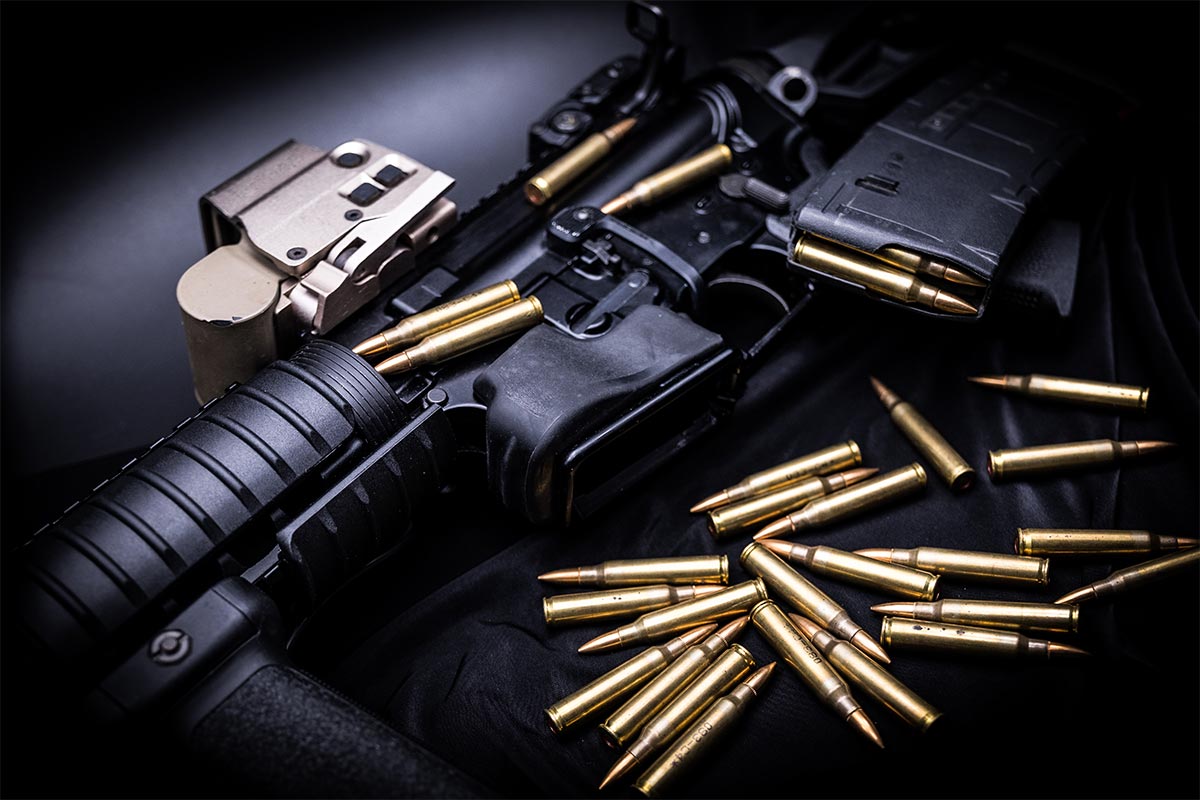How To Choose The Right Bullet For Reloading

The effectiveness of a custom load depends on many factors, and the bullet choice is only one of them, a very important one, though. While reloading is all about experimenting and testing, your guesswork should be informed - that’s why we’ve prepared this ultimate guide to reloading bullets. So, from this article, you’ll learn:
- What different types of bullets are - FMJ vs. JHP vs. SP
- What bullet weight is the right for your gun;
- How to choose a bullet for reloading based on your twist rate and barrel length;
- Hunting bullets vs. Target bullets.
Enjoy reading!
Considering Application
Before you go any further, you need to consider the intended application of your custom ammo because each sets different tasks and efficiency criteria. Will you shoot at short or long ranges? Do you plan hunting or target shooting?
A hunting bullet, for example, must have a design that will allow it to expand on impact to cause sufficient tissue damage and humanely (quickly) kill an animal. In the world of target shooting, expansion isn’t a thing. Instead, shooters need highly aerodynamic (high ballistic coefficient) projectiles that group tightly and fly as flat as possible. If you’re an avid plinker, you simply need the cheapest option. Rifle owners should also consider the twist rate to choose the right weight of the projectile. Now, let’s talk details.

Bullet Designs
Generally, there are three big groups of bullets: full metal jacket (FMJ), hollow-point (HP), and soft-point (SP). They are easy to distinguish between by the bullet nose.
Full metal jacket bullets have a lead core encapsulated by a copper or steel outer shell (jacket), and the tip of the FMJ is the same material as the rest of the bullet. Since the lead isn’t exposed, it doesn’t contact the barrel. Therefore, the barrel accumulates less residue and is much easier to clean. Because FMJs are uniform, they are easier to manufacture, which means cheaper, more consistent bullets for shooters. Uniformity also promotes downrange accuracy.
Unlike FMJs, HPs and SPs are expandable. Hollow-point bullets, also known as jacketed hollow point bullets, or JHP, also contain a soft lead core surrounded by the copper jacket but have a cavity on their tips. When the HP bullet encounters soft tissue, this cavity causes it to mushroom. Thanks to this effect, the projectile leaves a larger wound channel and gets stuck in the flesh, not over-penetrating the target.
Soft-point bullets have the lead tip exposed at the bullet’s nose. As you know, lead is a malleable metal, so when such a bullet hits soft tissue, lead gets compressed, causing the projectile’s body to deform and mushroom.
Now, let’s tackle which is better for which task.

FMJ vs. JHP
FMJs are ideal for target practice and plinking because they are designed to continue through the target with minimal deflection and deformation. That’s also the reason they are NOT used against live targets. The exception is military operations.
Let’s take the AR-15/M16 platform. It can shoot the 5.56 NATO military round or the .223 Remington civilian round. The 5.56 ammo will always be FMJ (also known as ball ammo), even though military people use it against humans. Why is that? Some forum dwellers believe that killing soldiers isn’t the prime goal of a military operation and that it’s enough to just take them out of action. As FMJs don’t expand and often fly right through the target, they transfer far less kinetic energy and inflict less tissue damage. It sounds knightly. But the true reasons are better consistency, lower production cost, and no feeding issues.
If you plan to use your AR-15 as a truck rifle or a home defense gun, you should ALWAYS use expandable .223 ammo. Remember we’ve talked about overpenetration? In populated areas, overpenetration must be avoided because a bullet that goes through an attacker can hit an innocent bystander.
So, considering hollow-points vs. FMJ, you must use FMJ bullets only to shoot non-living targets. The exceptions include cartridges like the. 380 ACP (except +P loads) and .22 LR because the stock ammo in these calibers is underpowered and often fails to expand on impact. But remember that you are responsible for every bullet that leaves the muzzle of your gun. So test your FMJ-based loads to make sure they are suitable for self-defense.

So, everything discussed above brings us to the conclusion that hollow-points are ideal for self-defense and home defense because overpenetration is much less likely to happen.
Do RIFLE Hollow-Points Expand?
No, they don’t. The cavity is too narrow to produce expansion. So in this respect, rifle HPs perform similarly to FMJs. But a hollow cavity moves the gravity center to the rear, giving an accuracy advantage at short and medium ranges. Because of unpredictable terminal performance, they are used for precision target shooting and, sometimes, hunting small game.
Also, you may have noticed Match Grade bullets. These bullets are often hollow-point but are not designed to expand on impact.
Soft-Points and Other Bullet Designs
What about soft-points? SPs expand and deform slower than HPs, meaning they penetrate deeper and transfer more kinetic energy. Therefore, soft-point bullets are best suited for hunting big game, like elk, moose, deer, bear, and hog. Reliable expansion of SP bullets is expected down to 2,000 fps of remaining velocity and will perform the most efficiently at 250-300 yards.

Some other bullet designs include:
- Bonded bullets boast high weight retention and deep penetration because they have their lead core bonded to the jacket, so they expand as one. Excellent for hunting big, tough animals.
- Boat-tail bullets (BT) have a lower drag than flat-base designs, which hints at their long-range application, 400-500 yards and further. However, some guns produce tighter groups with flat-based projectiles.
- Polymer-tip (ballistic-tip) bullets boast aerodynamic performance superior to HP and SP and reliably expand on impact down to velocities of about 1,800 fps.
Summing up
Best bullets for:
- Hunting - SP, Polymer Tip, Bonded, HP (handgun);
- Personal & Home Defense - HP, (!) FMJ (LOW-POWER LOADS ONLY);
- Target Shooting - FMJ, Match Grade.

Bullet Weight
Bullet weight is measured in grains (gr). Usually, handgun and rifle shooters are offered several bullet grain options within one caliber. Common examples include 115, 124, and 147 grains for the 9mm and 55 and 62 grains for the .223/5.56.
When picking projectiles, you need to know the rifle’s twist rate. It refers to the speed of spin in the rifle barrel and is represented in inches per turn; for example, a twist of 1:7" means the bullet makes one revolution in 7 inches. The general rule is to choose heavier bullets for a faster twist rate and lighter bullets for a slower twist to avoid under- or overstabilization. Consult with the manufacturer’s manual or look for twist rate charts for your caliber.
When choosing by application, you want a heavier bullet for hunting bigger game because it carries more energy. For the same reason, opt for a heavier projectile for self-defense because it produces better expansion and deeper penetration. When considering long-range shooting, lighter bullets give a flatter trajectory and travel farther, but heavier projectiles deflect less in the crosswind. So usually, long-range target shooters choose lighter bullets.



1 comment
I have been reloading since about 1995, and have loaded several calibers plus shotgun shells. For centerfire cartridges, it’s all about economy. I can press out hundreds of rounds in fairly short order for about half of what they would cost on a store shelf. If I am preparing for a hunt or for long-range shooting, then the choice of bullet becomes more important, as does the choice of powder. Otherwise, for me, cheap is best for range use. For shotgun shells, it isn’t economical at all to load the lightweight stuff you can by at discount stores. You’re wasting time because you won’t save money. Where shotshell loading becomes productive is with magnum or steel loads. I can punch those out for quite a bit less than store-bought rounds.